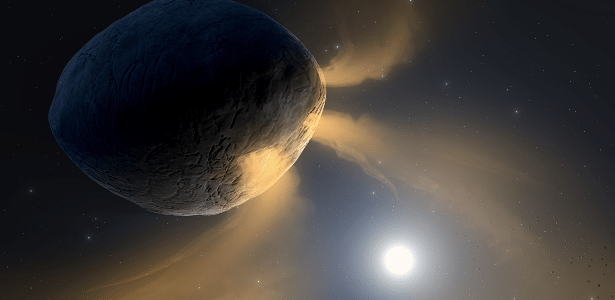or Phaeton showed very unusual behavior for a asteroid: Rotates faster and faster on its axis as it orbits the Sun. Finding out why this space rock has broken the mold could help protect the Earth and scientists are raising new hypotheses about what might happen.
Astronomers have observed 3,200 Phaethon since its discovery in 1983. And it has always been the “different” among asteroids. First, because its color is bluish, while its “brothers” are generally gray or reddish.
Furthermore, its orbit is very close to the Sun – a habit of comets rather than asteroids – reaching only 21 million km (about a third of the distance from Earth). Mercury to the Sun). In fact, that’s why he got this name: in Greek mythology, Phaethon (or Phaethon) is the son of Helios, god of the sun.
The researchers presented new data during the 54th Annual Meeting of the Division of Planetary Sciences of the American Astronomical Society (AAS), which took place this month.
Danger to the Earth?
Its path passes fairly close to here, in astronomical terms, but the Phaeton would not be able to cause an apocalypse on Earth.
But it gives us, every year, some beautiful “shooting stars”: the meteor shower Twinsin December, it is caused by the dusty tail of the Phaeton. AndThis is the only known rain generated by particles from an asteroid and not a comet.
However, it is not that small. With a diameter of over 5 kilometers, it could do a lot of damage if it fell on a city of land. But no calculations indicate this possibility.
Either way, understanding why this asteroid is changing its behavior could be the key to preventing unforeseen disasters.
accelerated rotation
The Phaethon is the object of the next DESTINY + mission of the Japanese Space Agency (Jaxa), which intends to land there. Therefore, scientists are studying the asteroid in depth. In the process, Sean Marshall of the Arecibo Observatory in Puerto Rico noted that his model’s predictions did not match previous data.
He concluded that Phaethon’s rotation period had changed between 1989 and 2021. This could be caused by a gradual and steady acceleration, decreasing the rotation period by 4 milliseconds per year, which became evident after decades.
In 2016, an alternation in the data had already been observed, but there was not enough information to understand what was going on. A mystery, as the rotation of an asteroid on its axis usually does not change.
possible reasons
In the most recent analysis, astronomers point out that the asteroid could change its behavior due to the loss of mass, as Phaethon is known to release sodium. This reduction is not common in asteroids, but in comets: in them the degassing process produces an accelerating effect.
Another reason can be caused by heat: very high temperatures in the vicinity of a star (such as our Sun) can change the rotation speed of the asteroid. Understanding the patterns in this data is also critical to the success of the DESTINY + mission, as astronomers must accurately predict the timing of a close pass and space rock landing.
* With information from NASA and Science Alert


